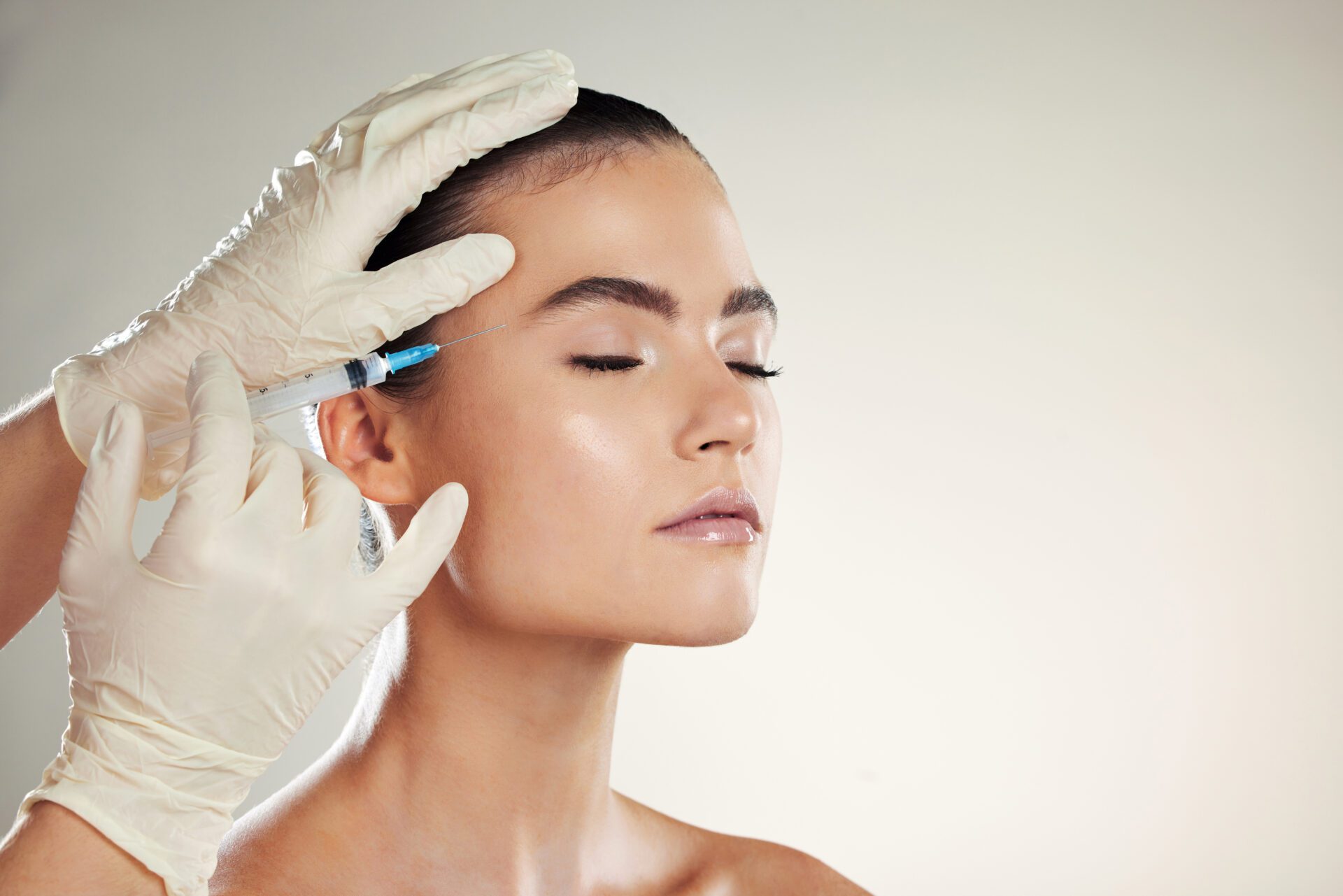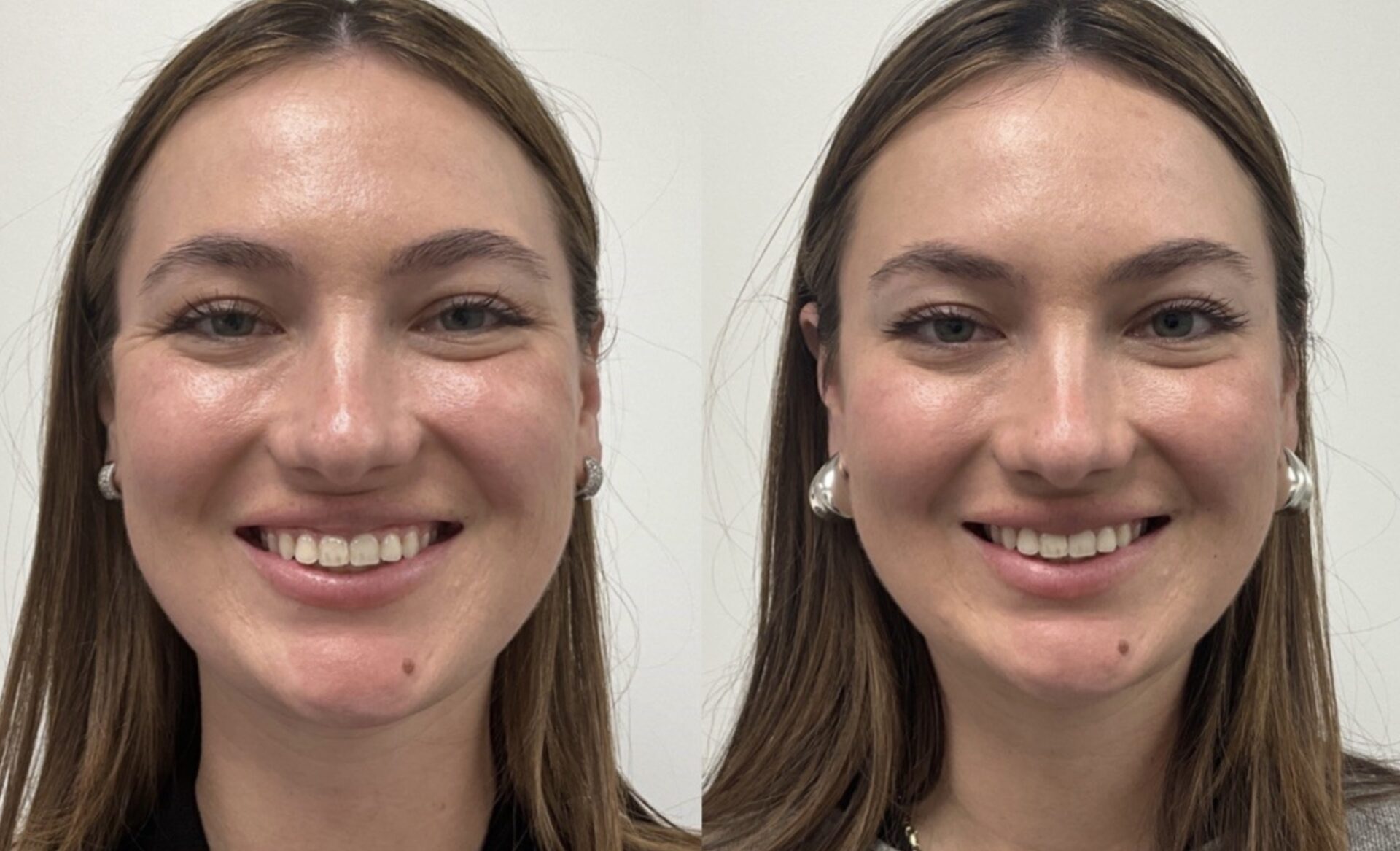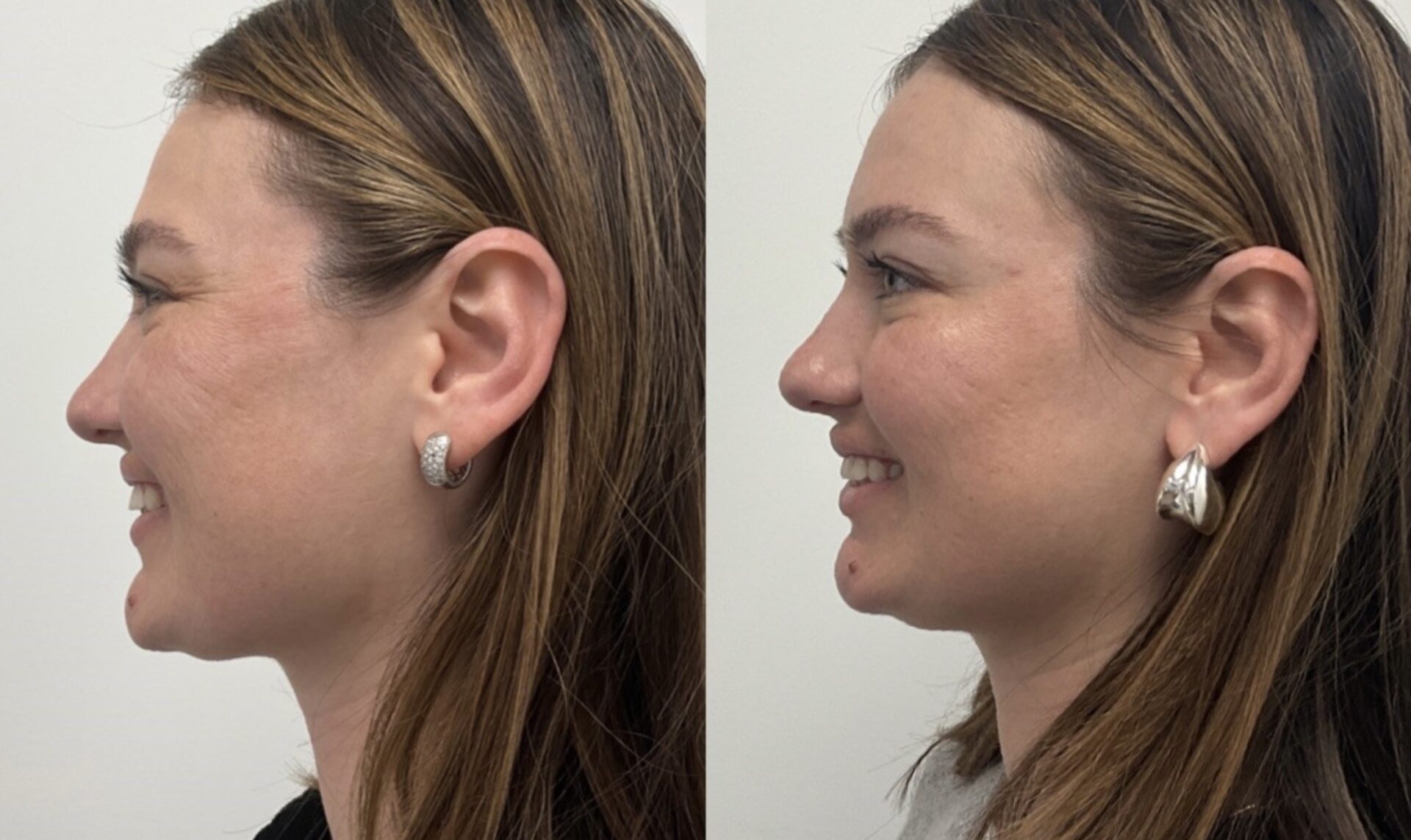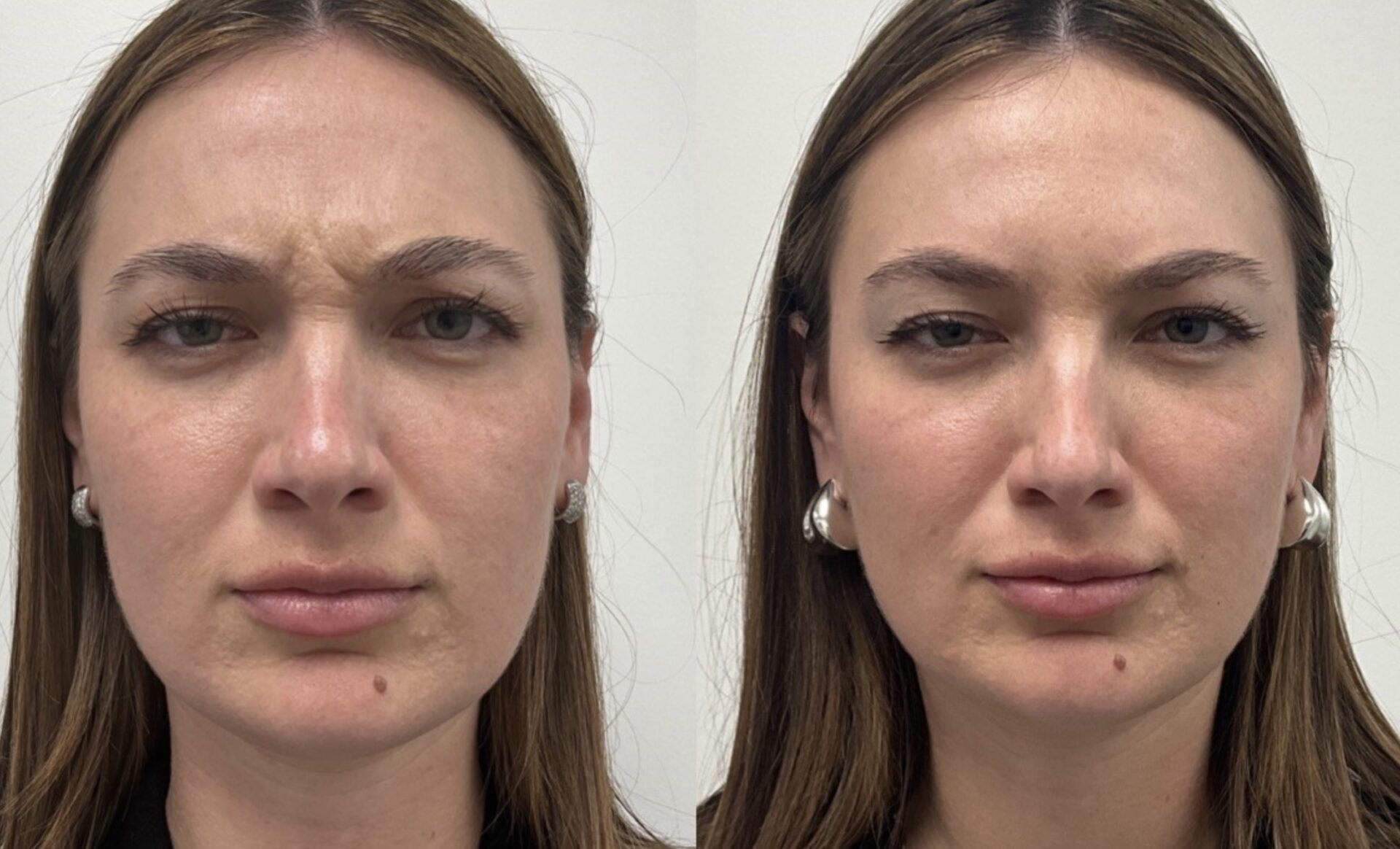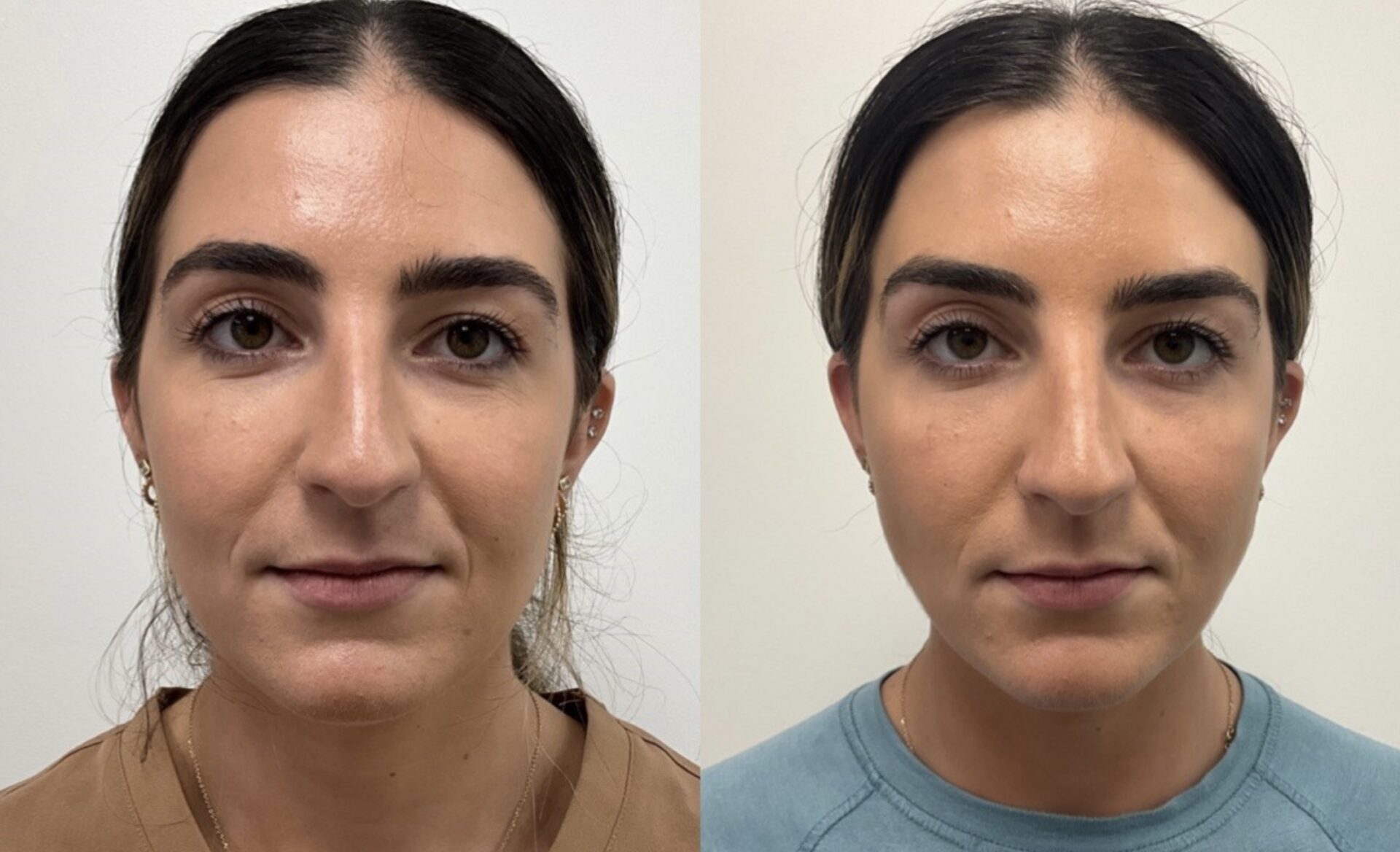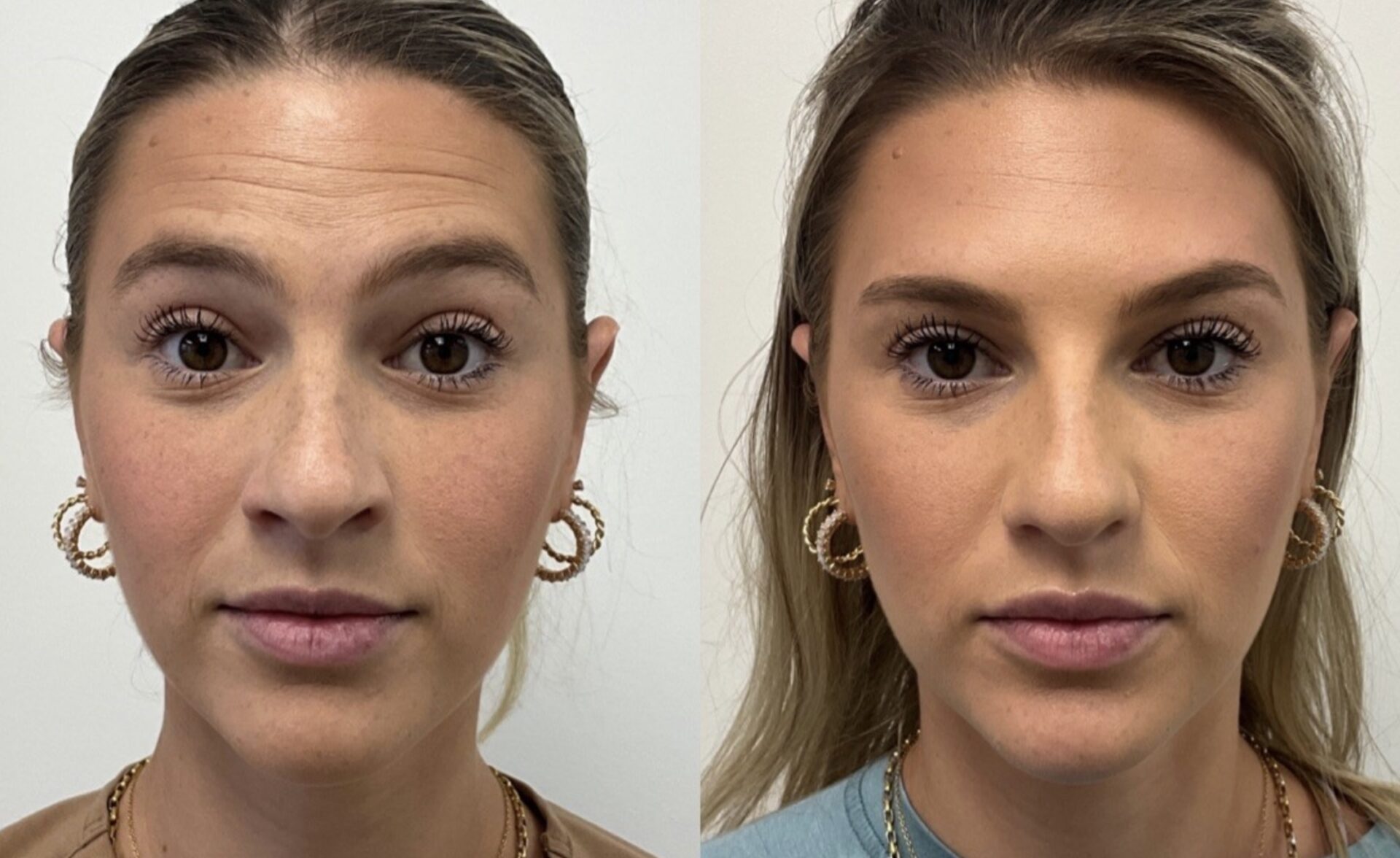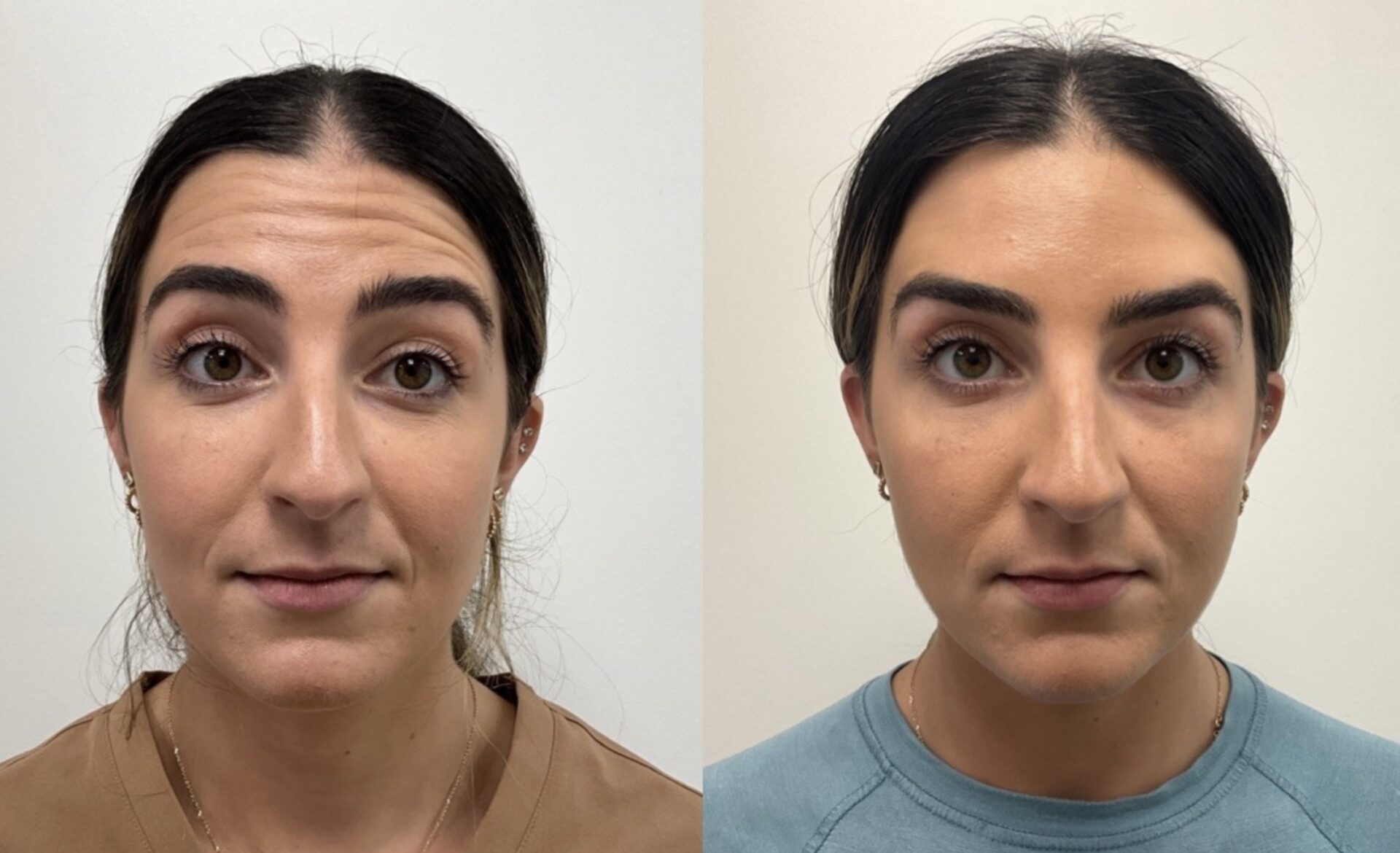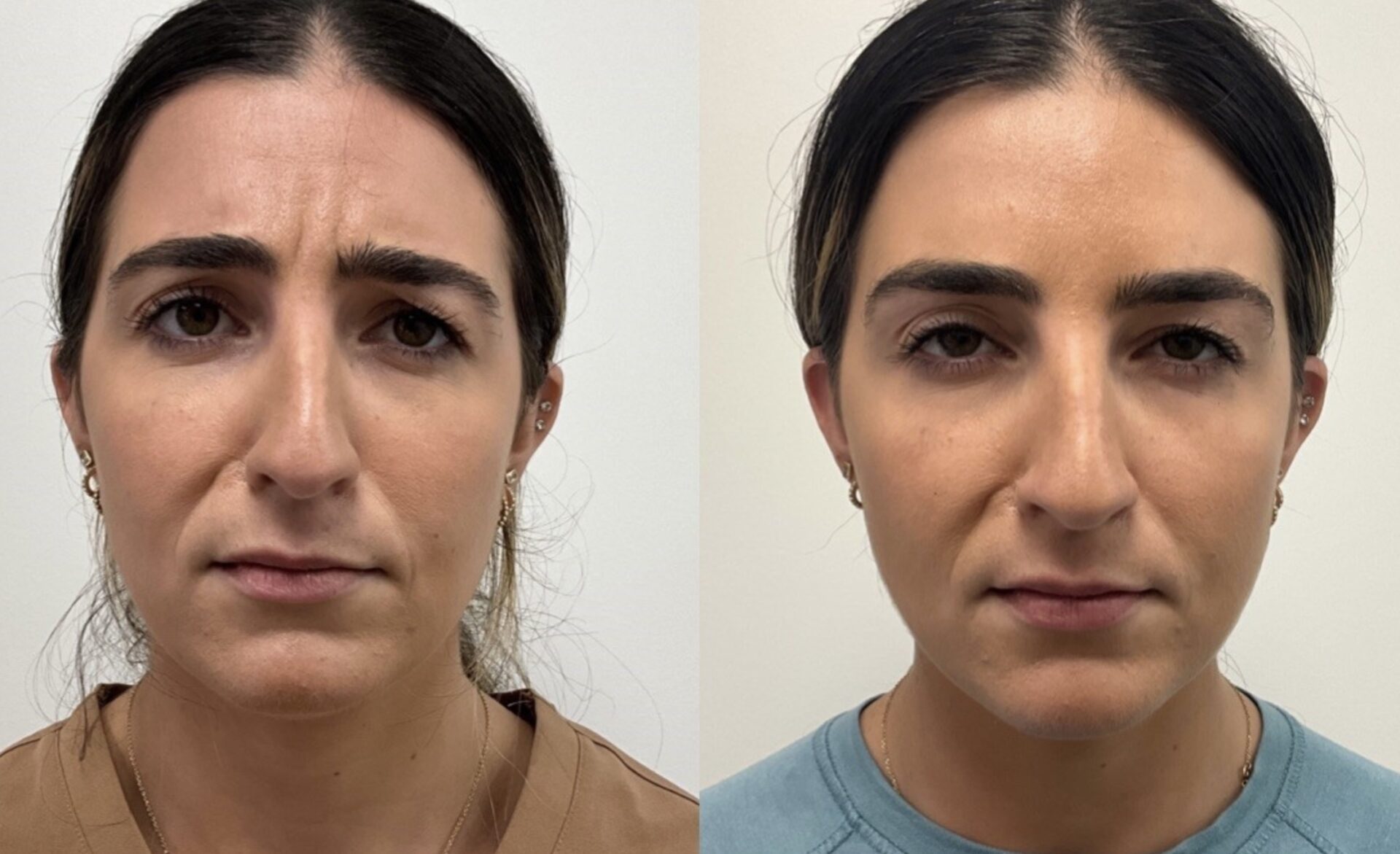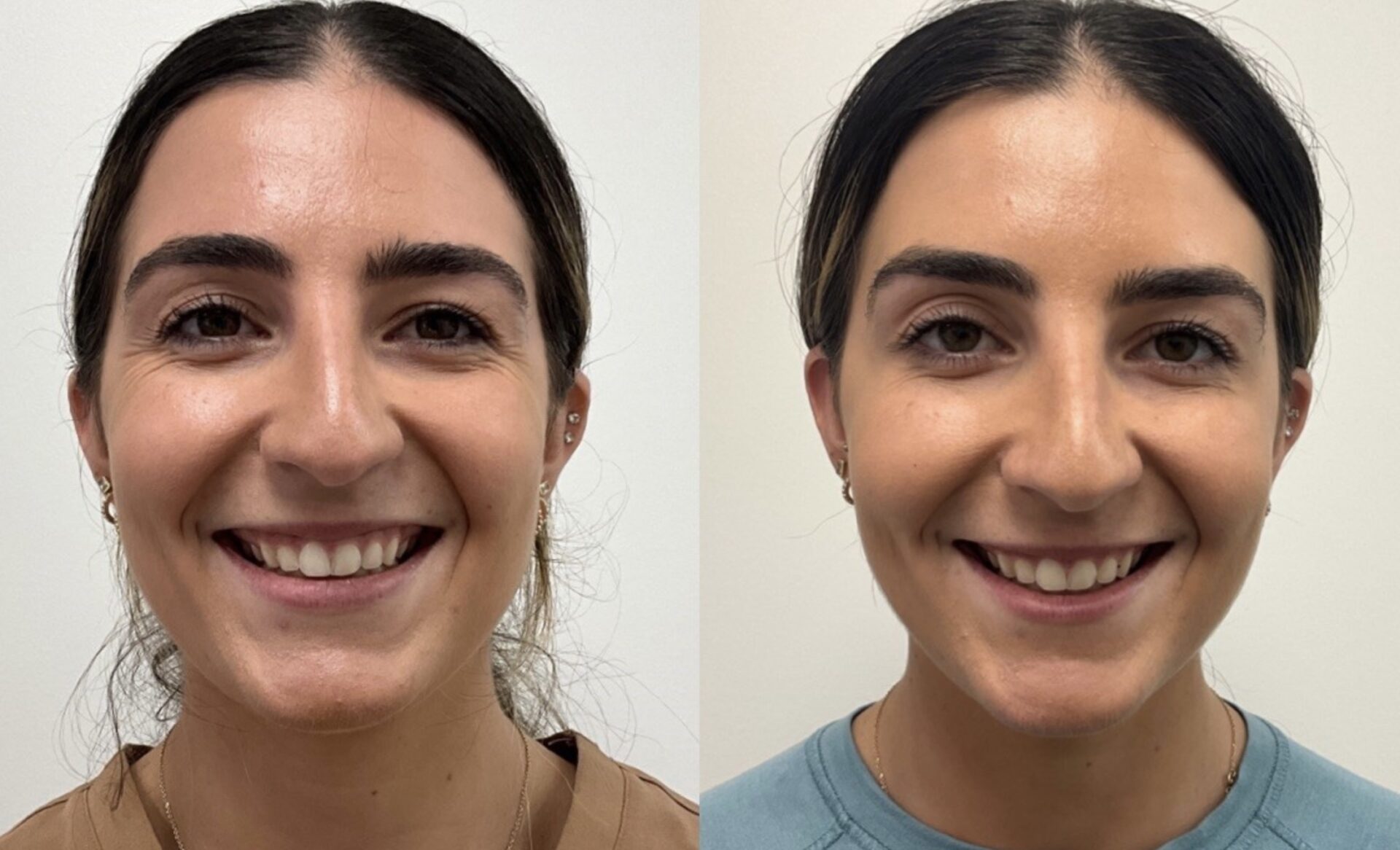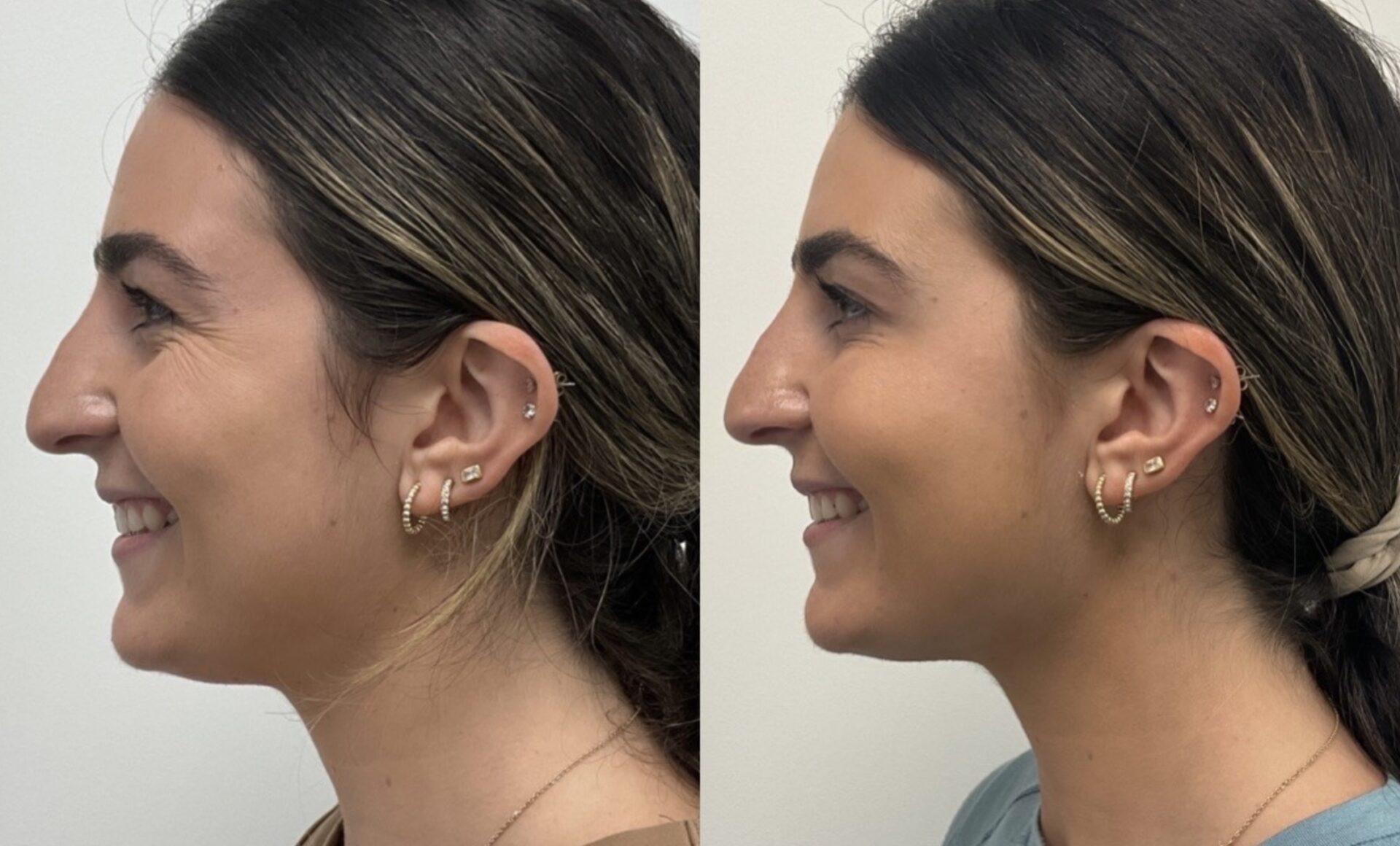Before + After
Wrinkle Relaxers or Neuromodulator treatments in medical aesthetics involve the use of substances that temporarily block nerve signals, resulting in the relaxation of targeted muscles. The most common neuromodulators used for aesthetic purposes is botulinum toxin, often marketed under brand names like Botox, Dysport, Jeuveau, Xeomin, and Daxxify. This treatment is primarily used to reduce the appearance of wrinkles and fine lines, particularly on the face.
During the procedure, small amounts of the wrinkle relaxer are injected into the specific muscles responsible for facial expressions. As a result, the treated muscles relax, smoothing out wrinkles and preventing the formation of new ones. Patients undergoing neuromodulator treatment in medical aesthetics can expect several outcomes. First and foremost, there is a noticeable reduction in the appearance of dynamic wrinkles, such as crow’s feet, forehead lines, and frown lines. The effects typically become apparent within a few days to a week after the procedure and can last for three to six months, depending on the specific wrinkle relaxer used and individual factors.
While the treatment is generally considered safe, there can be mild, temporary side effects; these may include localized pain or bruising at the injection site and possible headache. Wrinkle relaxer treatments have become a popular and effective option in medical aesthetics, providing a non-invasive approach to achieving a more youthful and refreshed appearance. Regular maintenance appointments may be necessary to sustain the desired effects over time.
